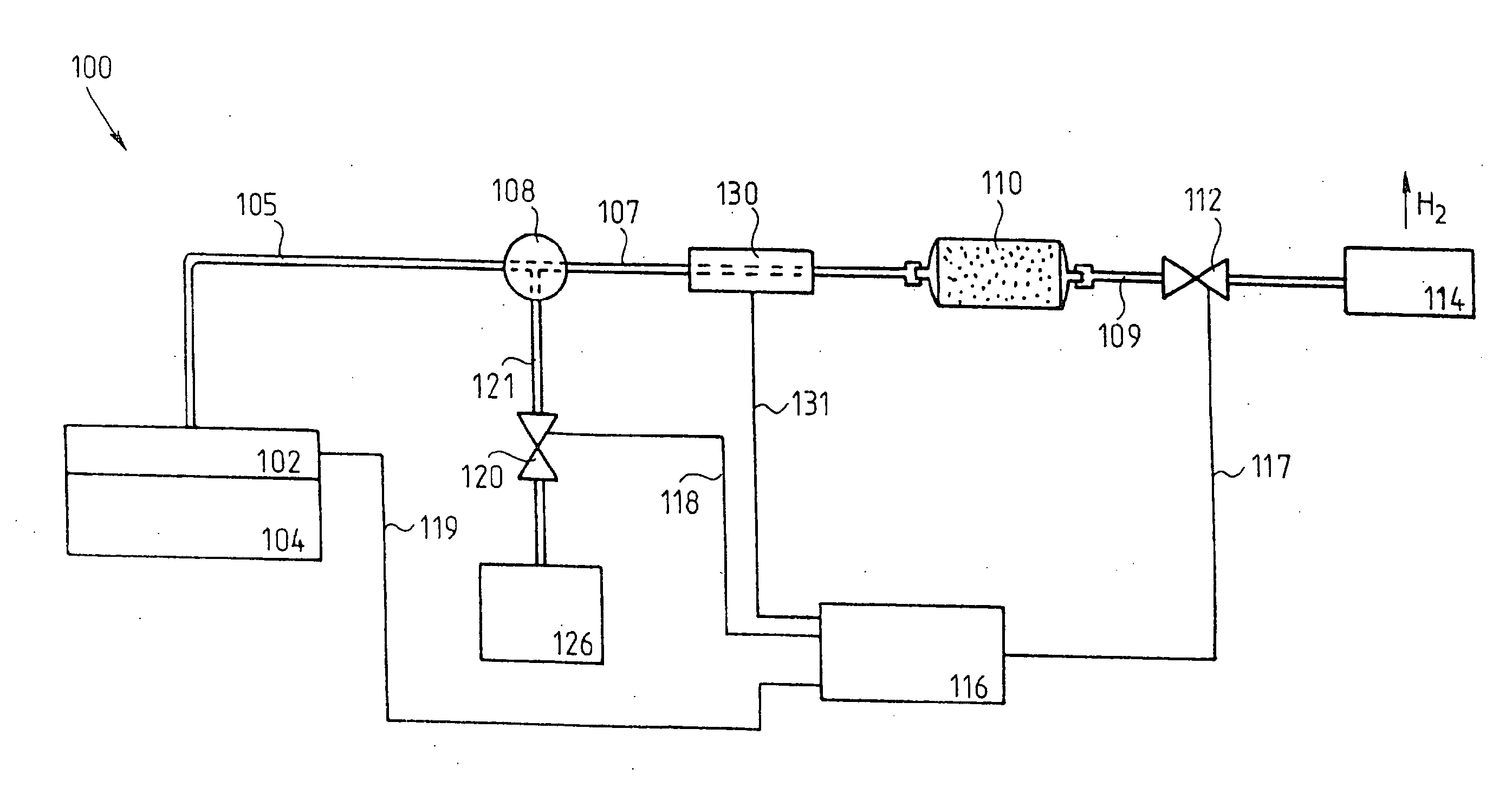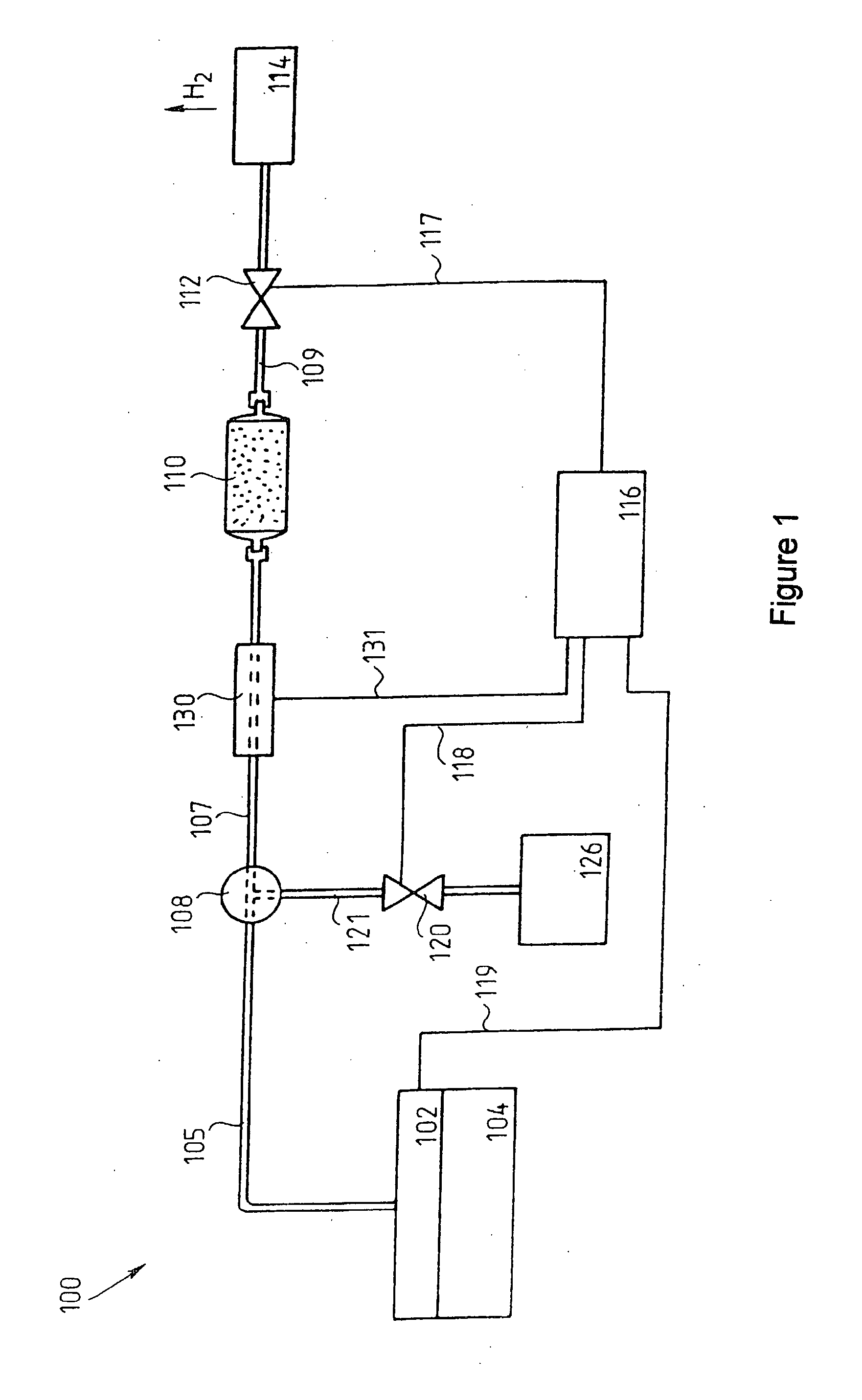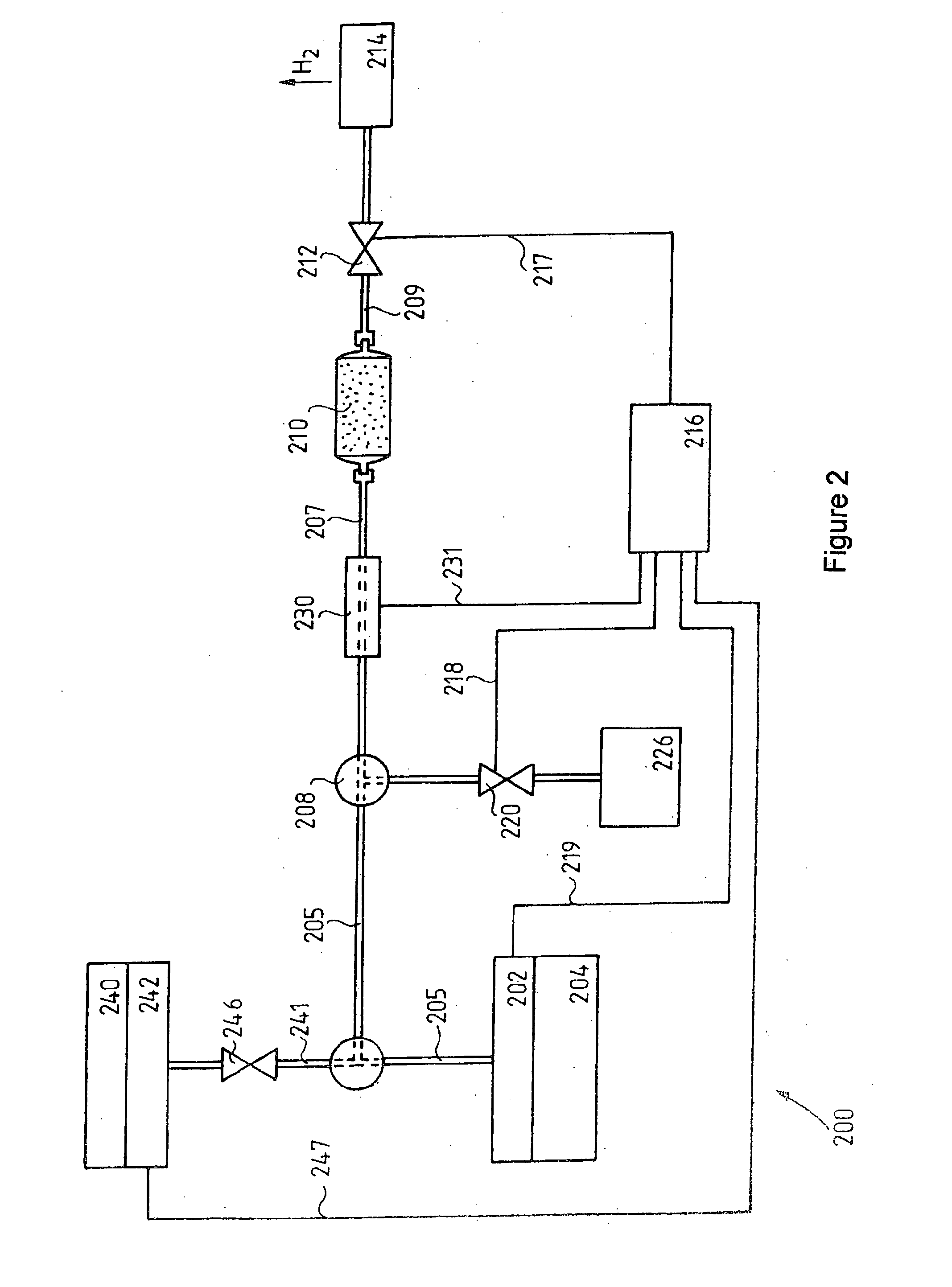Laboratory scale continuous flow hydrogenation process
a hydrogenation process and laboratory technology, applied in the direction of fluid pressure control, gas-gas reaction process, physical/chemical process catalysts, etc., can solve the problems of increasing the dimensions and operational risks of the apparatus, the relative speed and automation of synthesis/derivatisation, and the use of structural elements in the hydrogenation performed under supercritical conditions. , to achieve the effect of fast and automated
- Summary
- Abstract
- Description
- Claims
- Application Information
AI Technical Summary
Benefits of technology
Problems solved by technology
Method used
Image
Examples
Embodiment Construction
[0026]The hydrogenation apparatus 100 shown schematically in FIG. 1 comprises a reservoir 104 equipped with a feed pump 102, a collecting element 108, a hydrogenation reactor 110, a pressure-adjusting unit 112, a product receptacle 114, a controlling electronics 116, a valve 120 and a hydrogen source 126. The inlet of the feed pump 102 is in fluid communication with the reservoir 104, while its outlet is connected through a pipe 105 to a first inlet of the collecting element 108. The hydrogen source 126 is connected to a second inlet of the collecting element 108 through a pipe 121 and the valve 120 inserted into the pipe 121. The outlet of the collecting element 108 is connected through a pipe 107 to the inlet of the hydrogenation reactor 110. The outlet of the hydrogenation reactor 110 opens into the product receptacle 114 through a pipe 109 and the pressure-adjusting unit 112 inserted into the pipe 109. As a result of connecting the listed elements to each other, the hydrogenatio...
PUM
| Property | Measurement | Unit |
|---|---|---|
| pressure | aaaaa | aaaaa |
| partial pressure | aaaaa | aaaaa |
| partial pressure | aaaaa | aaaaa |
Abstract
Description
Claims
Application Information
 Login to View More
Login to View More - R&D
- Intellectual Property
- Life Sciences
- Materials
- Tech Scout
- Unparalleled Data Quality
- Higher Quality Content
- 60% Fewer Hallucinations
Browse by: Latest US Patents, China's latest patents, Technical Efficacy Thesaurus, Application Domain, Technology Topic, Popular Technical Reports.
© 2025 PatSnap. All rights reserved.Legal|Privacy policy|Modern Slavery Act Transparency Statement|Sitemap|About US| Contact US: help@patsnap.com



